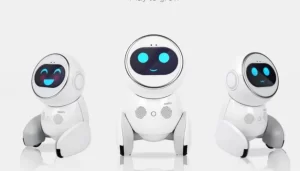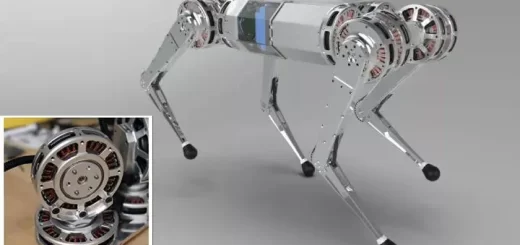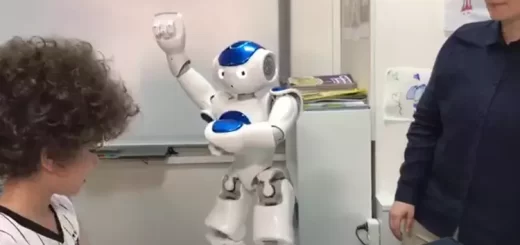Keeko robot teacher review, advantages, disadvantages and What can Keeko do?
Keeko robot teacher can engage children by reading them stories in a fun and interactive way. It can challenge students with logic problems, making learning more engaging. When students answer correctly or complete tasks, Keeko can offer encouragement, keeping them motivated.
Keeko robot teacher
Keeko acts as a fun and engaging companion teacher, assisting with storytelling, problem-solving, and creating a positive learning environment. The name Keeko might be used as a placeholder or concept for robot teachers in general, rather than a specific robot with unique functionalities. Keeko helps create a fun and stimulating learning environment for young children.
There are AI-powered tutoring programs that can provide students with personalized learning experiences. Some researchers are exploring how robots can be used to help students develop social and emotional skills.
Keeko robots have the potential to be valuable tools in education, but they shouldn’t replace human teachers entirely. The ideal scenario might be a combination of both, where Keeko handles repetitive tasks and frees up the teacher to focus on individual needs and foster social-emotional development.
Keeko is a teacher’s assistant, not a replacement. While Keeko can handle some tasks, it cannot provide the same level of social and emotional interaction as a human teacher.
What can Robot Teacher “Keeko” do?
Robot teacher Keeko is designed to be a helping hand in kindergartens, especially in China. Keeko can engage children by reading them stories in a fun and interactive way. Keeko can present problems and puzzles for the children to solve, helping them develop their critical thinking skills.
Keeko can provide positive reinforcement, like showing heart-shaped eyes, when students answer correctly. Keeko scoots around on wheels, which might be appealing to young children. Keeko can challenge students with logic problems, making learning interactive and fun.
Keeko can respond to the children’s answers, offering encouragement with positive feedback. Keeko scoots around on wheels, adding a playful element to classroom interaction. Keeko can assist teachers, The ideal scenario might be a combination of human and robot teachers, with each playing to their strengths.
Robot teachers like Keeko provide consistent information and basic skills practice. However, they likely wouldn’t be a complete replacement for human teachers, who can provide emotional support, adapt to unexpected situations, and foster social interaction and a strong student-teacher bond.
Advantages of Keeko
Keeko can provide consistent instruction and practice without getting tired or frustrated, offering tireless instruction and potentially providing more practice opportunities. This can be beneficial for repetitive tasks or for students who need extra help. Keeko can ensure all students receive the same core information in the same way. This can help reduce bias and ensure all students have a strong foundation.
Keeko may use multimedia elements, games, and activities to keep students engaged and motivated. KeeKo can potentially collect data on student performance and adapt instruction based on individual needs, allowing teachers to identify areas needing improvement and personalize instruction further. KeeKo can free up the teacher’s time for more individualized instruction, assessment, or parent communication.
Keeko could deliver lessons in a consistent and repeatable way, ensuring all students receive the same core information. Lessons could be tailored to individual student needs. Keeko might be able to adjust difficulty levels, provide targeted practice, or offer alternative explanations based on student performance.
A robot teacher like Keeko might be engaging for some students, particularly younger children, due to its novelty and potentially interactive features. Keeko might use interactive features or gamification to keep students engaged with the material.
Keeko wouldn’t get tired, offering consistent explanations and activities for students. Keeko could be available 24/7, allowing students to revisit materials or practice exercises outside of class time. Depending on its programming, Keeko might be able to adjust its teaching style to cater to individual learning paces or needs.
Disadvantages of Keeko
KeeKo may struggle to understand and respond to student emotions, which can be important for motivation, classroom management, building trust, addressing anxieties, and social-emotional learning. KeeKo might be limited by its programming, It might not be able to adapt to unexpected situations or answer open-ended questions requiring critical thinking or interpretation, outside its programming.
Students may miss out on the social interaction and role modeling that a human teacher provides. Acquiring and maintaining robots like KeeKo could be expensive. Schools might become reliant on technology, potentially hindering teachers’ professional development.
Access to technology and reliable internet can vary. This could create an unequal learning environment for students without proper resources. Human interaction is a vital part of learning. Keeko might not be able to provide the same level of social interaction and support as a human teacher.
Encouraging creativity and critical thinking skills might be difficult for Keeko. These skills often require open-ended discussions and exploration of ideas, which might be challenging for a robot following a set program. A robot teacher like Keeko would likely still require a human teacher to oversee the classroom, develop a curriculum, and address complex student needs.
Human-to-human interaction is a valuable part of learning. Keebo might not be able to provide the same level of social interaction and support as a human teacher. The bond between teacher and student can be a powerful motivator. Keebo might struggle to foster the same level of connection. Purchasing and maintaining Keeko could be expensive. Additionally, classrooms would rely on technology to function properly, which could disrupt lessons.
You can follow Science Online on Youtube from this link: Science online
You can download Science Online application on Google Play from this link: Science Online Apps on Google Play
Elias robot review, advantages, disadvantages, and What robot teaches languages?
Robot teachers use, types, advantages, and disadvantages
Educational robotics, Robot teachers, Social robots review, features advantages and drawbacks
Artificial intelligence in education, AI tutors features, advantages and disadvantages
Pros and cons of technology in education and Can technology replace teachers?
The importance and uses of educational robotics for students




